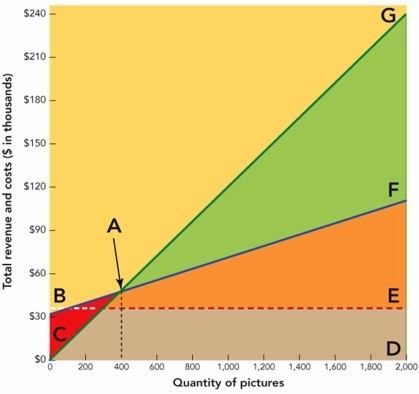 Figure 11-6Suppose you are the owner of a picture frame store. Let's assume that the average price customers are willing to pay for each picture frame is $120. Also, suppose your fixed costs (FC) total $32,000 (real estate taxes, interest on a bank loan, etc.) and unit variable cost (UVC) for a picture frame is $40 (labor, glass, frame, and matting). According to Figure 11-6 above, how much profit will your picture frame store make if it sells 400 picture frames?
Figure 11-6Suppose you are the owner of a picture frame store. Let's assume that the average price customers are willing to pay for each picture frame is $120. Also, suppose your fixed costs (FC) total $32,000 (real estate taxes, interest on a bank loan, etc.) and unit variable cost (UVC) for a picture frame is $40 (labor, glass, frame, and matting). According to Figure 11-6 above, how much profit will your picture frame store make if it sells 400 picture frames?
A. $0
B. ($32,000)
C. $32,000
D. $16,000
E. $48,000
Answer: A
You might also like to view...
The World Bank had developed a classification system whereby economies are divided into groups according to their ________
A) purchasing power parity (PPP) B) gross domestic product (GDP) C) human development index (HDI) D) gross national income (GNI)
____ refers to a condition where there is no WHEN clause in the CASE statement.
A. CASE_NOT_FOUND B. ZERO_DIVIDE C. DUP_VAL_ON_INDEX D. NO_DATA_FOUND
When Dr. Putt invented his Eye-Over-the-Ball (EOB) golf putting device, he knew during the introductory stage
A. sales would be low, profits would be high, and all potential golfers would jump at the opportunity to buy his product. B. sales would slow down, profits would peak, and early adopters of golf equipment would be his major customers. C. sales would be low and profits nonexistent, but he would attract golf equipment innovators. D. sales would level off, profits would decline, and mature golfers would be attracted to his product. E. sales would rise quickly, profits would jump, and even laggards would buy his product.
It is commonly accepted that the industry average for a ratio is the ideal goal for a financial
manager to achieve. Indicate whether the statement is true or false